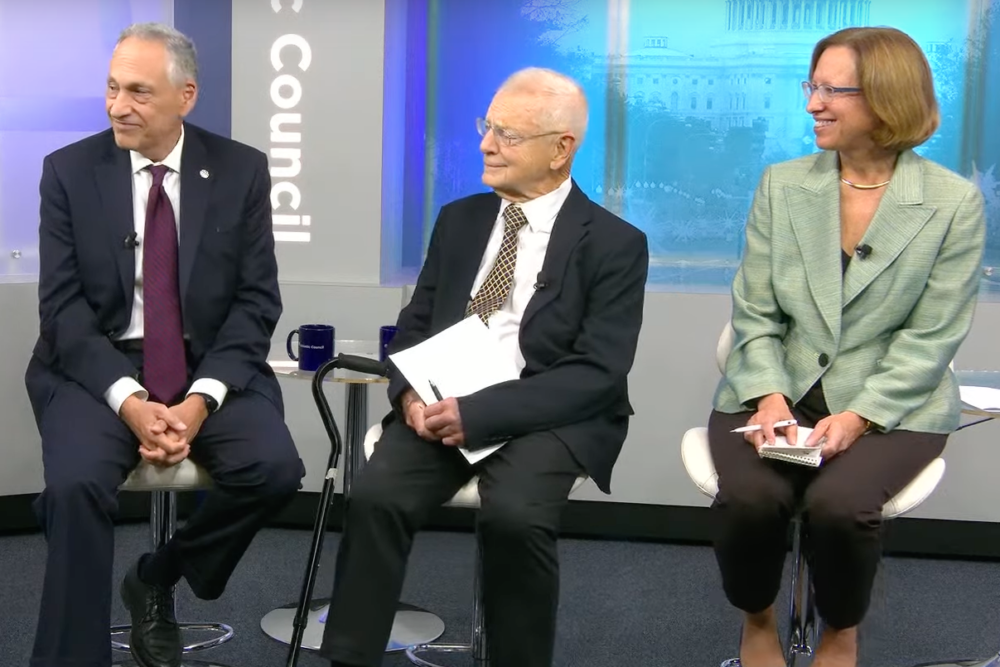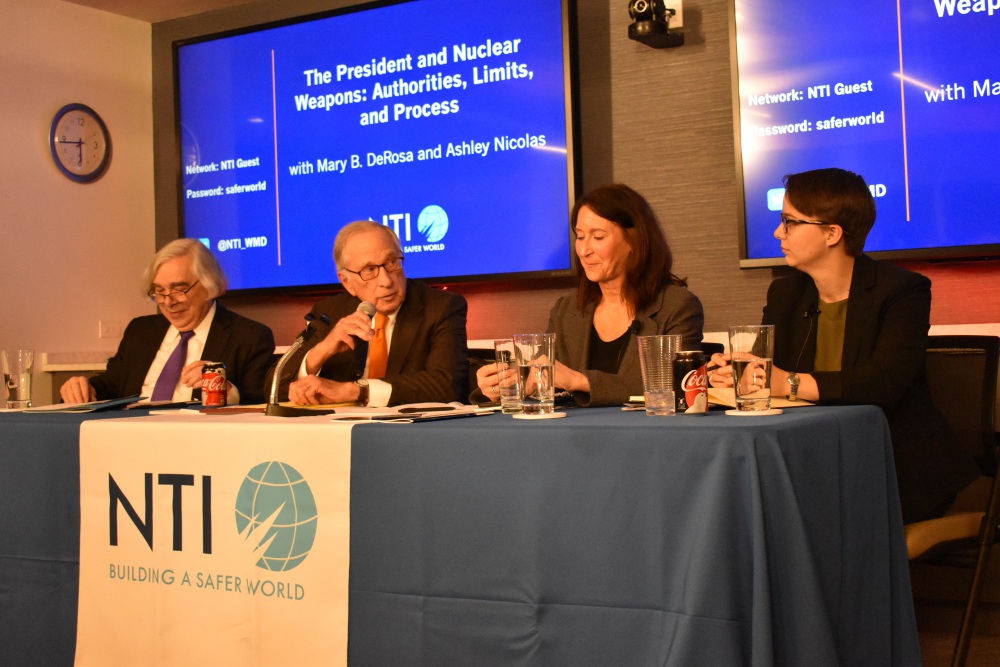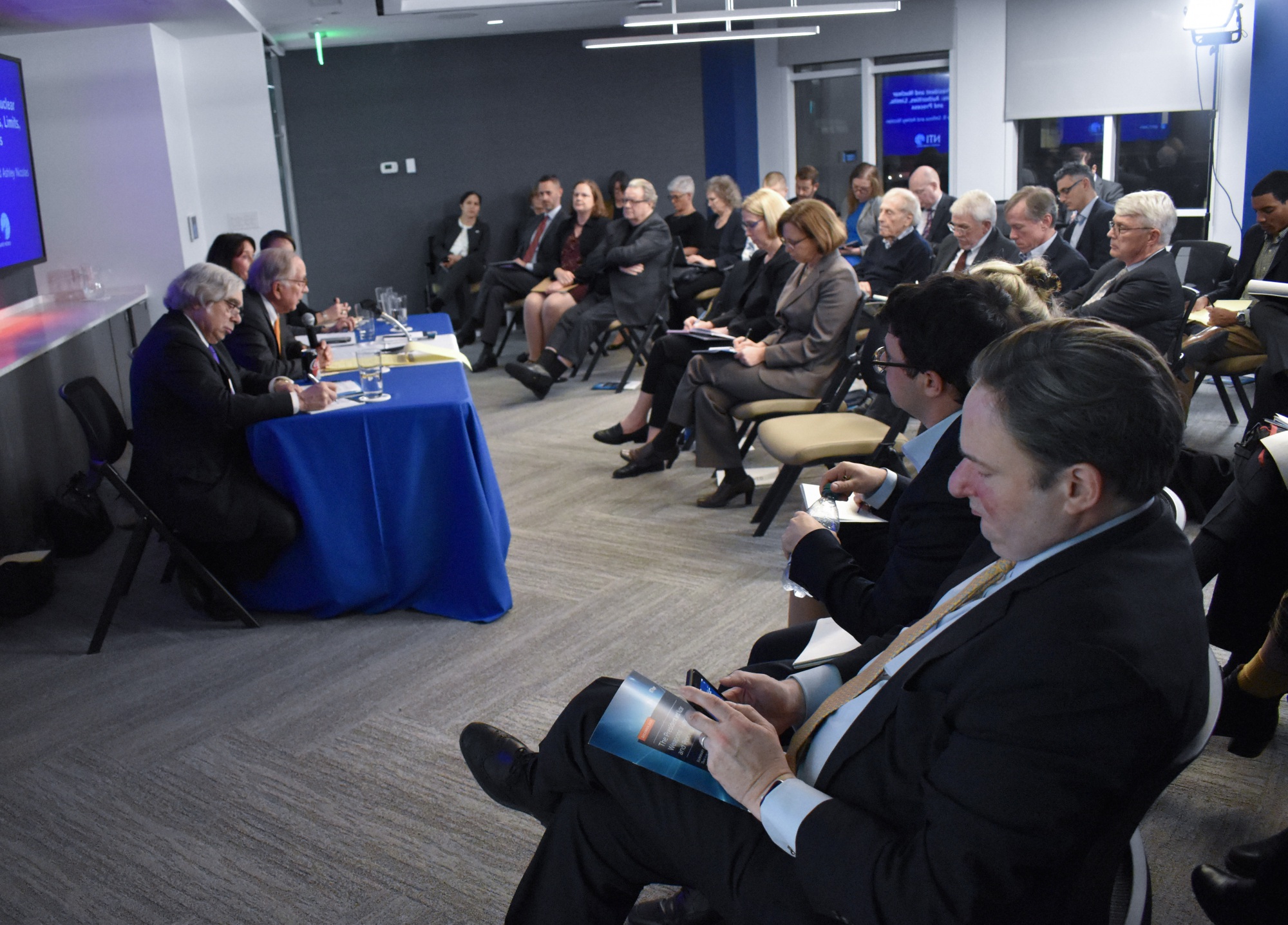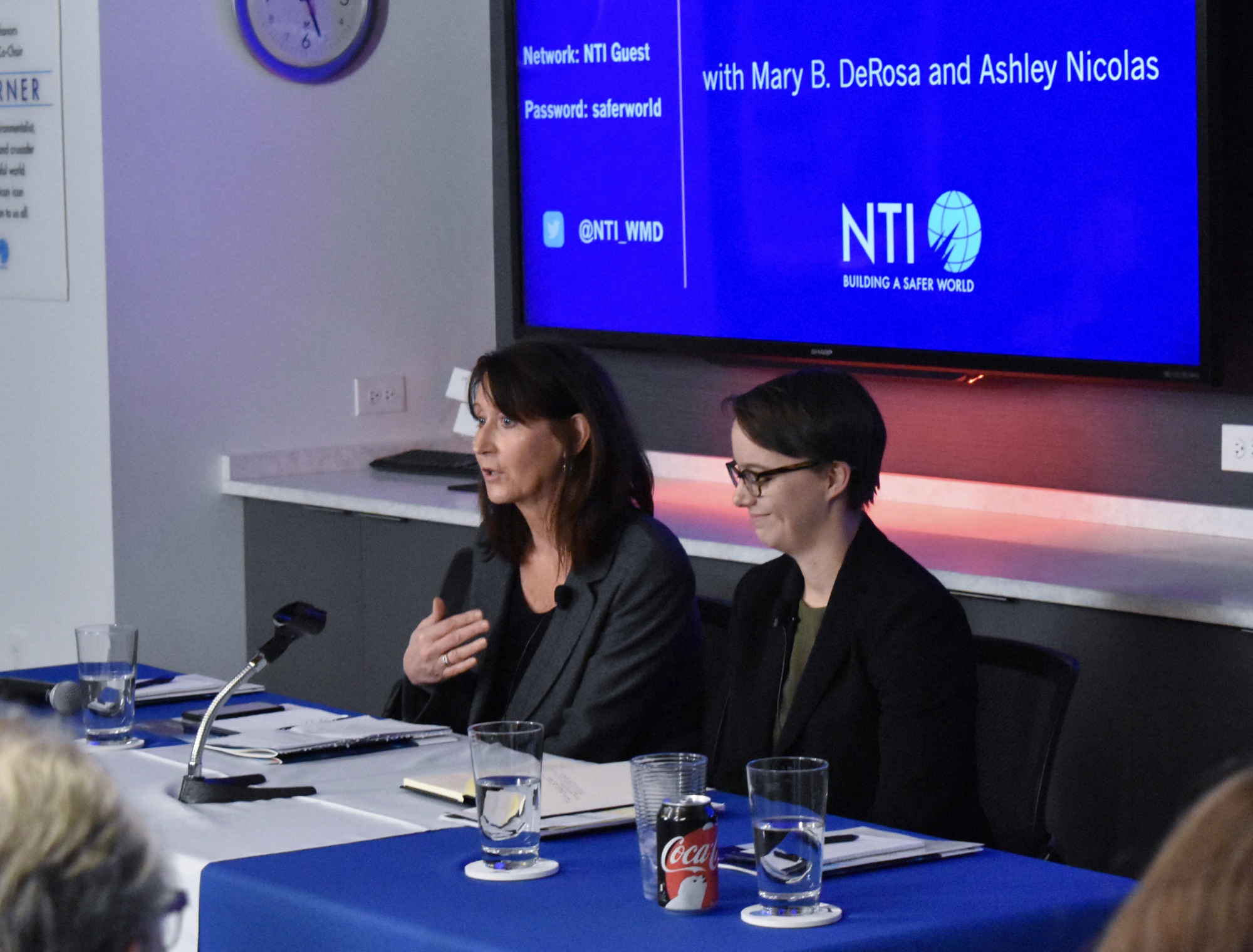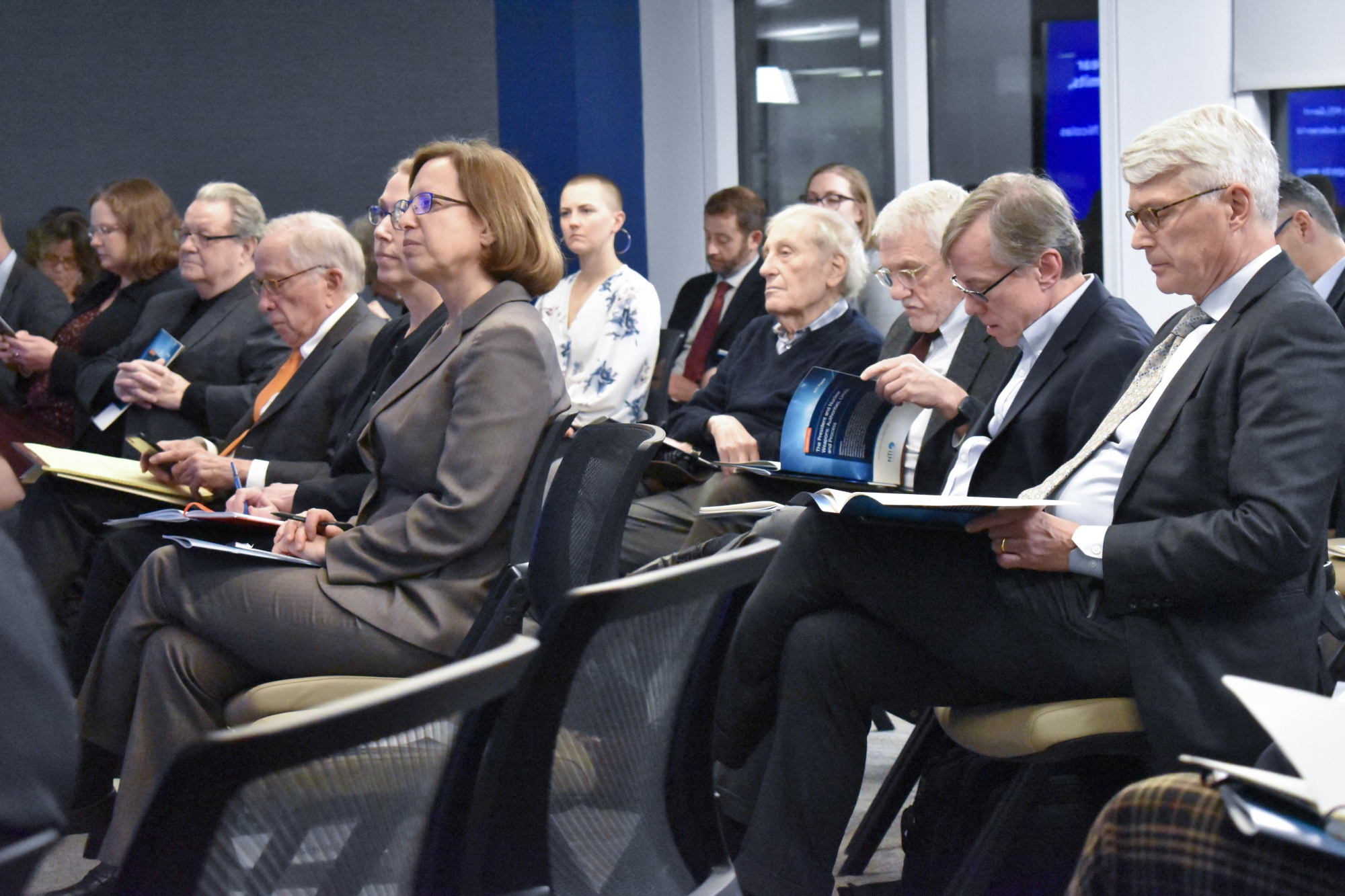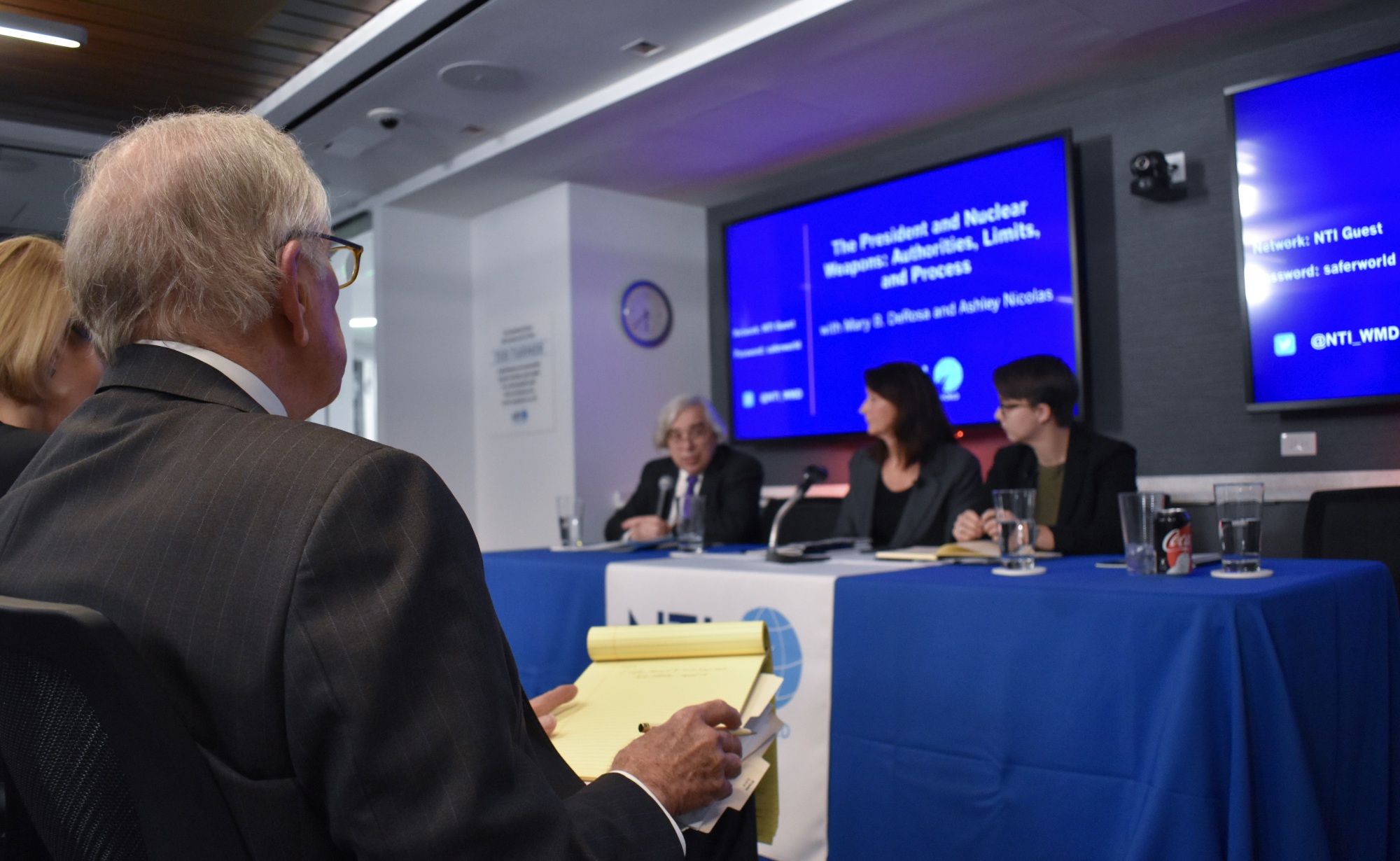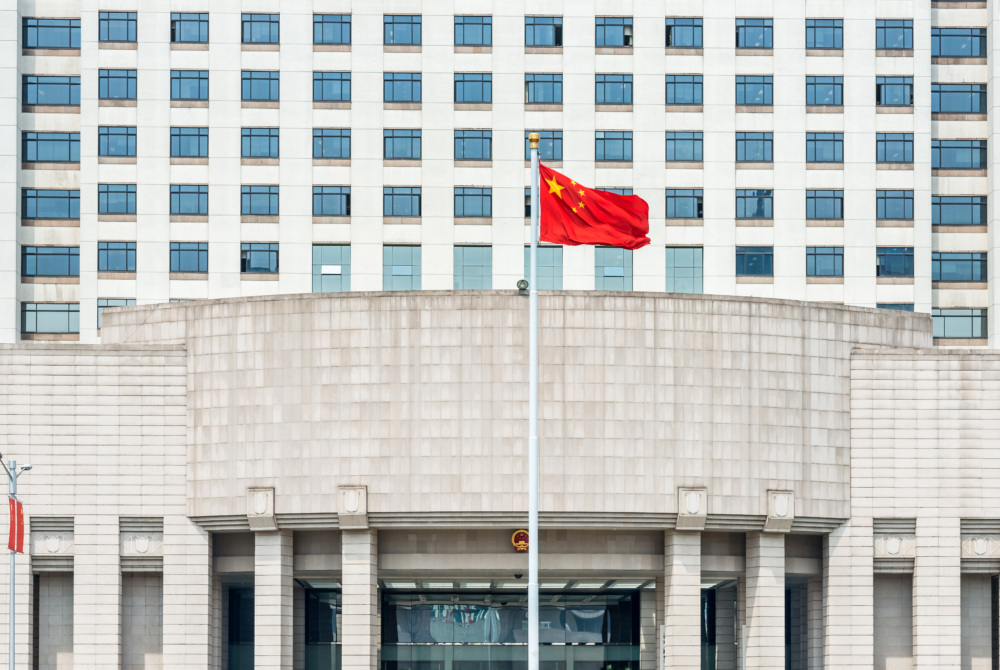Watch the full event here.
This post was written by Margaret Nina Miller, an intern with NTI’s Scientific and Technical
Affairs Program. Miller was formerly a Global Nuclear Policy Program intern
with NTI and graduated from the College of William & Mary – University of
St Andrews Joint Degree Programme.
During the Cold War, the United States established
procedures for authorizing the use of nuclear weapons that emphasized speed and
efficiency of the decision-making process. Now, experts
warn the threat of miscalculation or mistake is higher than ever. Is
it time to update the nuclear launch authority process for today’s
international environment?
National security legal experts Mary B. DeRosa
and Ashley Nicolas participated in a seminar at the Nuclear Threat Initiative
(NTI) on December 10, 2019 to discuss the legal aspects of nuclear launch
authority in the United States. DeRosa is a Professor from Practice at
Georgetown University Law Center and Nicolas is a 2019 Graduate of Georgetown
University Law Center. In their new NTI report, The
President and Nuclear Weapons: Authorities, Limits, and Process,
DeRosa and Nicolas examine U.S. domestic law, international law, and the
current executive branch process for ordering a nuclear launch. They were
joined at the seminar by Ernest J.
Moniz, NTI Co-Chair and CEO, and Sam Nunn,
NTI Co-Chair, who presented the recommendations in their accompanying paper, The
President and Nuclear Weapons: Implications of Sole Authority in Today’s World.
The Constitution and Nuclear Use
At the seminar, DeRosa explained that she and Nicolas set
out “to look at the legal authorities that the president has to take on this
momentous decision” to order the use of nuclear weapons because it is difficult
to find an authoritative source. As DeRosa noted, a legal analysis of presidential
authority to use nuclear weapons “throws us directly into the morass of how
exactly the Constitution divided war powers.” Ultimately, “both branches have a
great deal of authority,” split between the president’s duties as Commander in
Chief and the Legislative’s power to declare war.
There are two elements of unresolved tension between Executive
and Legislative authorities: When does the president need to seek authorization
to use nuclear weapons? And when can Congress limit the use of nuclear weapons?
To consider these questions, DeRosa presented three scenarios of potential
nuclear weapons use.
First, DeRosa highlighted the Supreme Court ruling that “the
president has the authority to act in self-defense without prior authorization
of Congress,” providing a constitutional basis for retaliatory nuclear use.
Second, the ‘first use’ of nuclear weapons in response to a conventional attack
is “a little hazier,” but self-defense “would likely still apply.” DeRosa noted
that while some scholars argue “a nuclear response is so escalatory it should
be treated as a new conflict,” U.S. nuclear policy since the Cold War has included
the possibility of nuclear response to a massive non-nuclear attack. Third, DeRosa
asserted that preemptive use of nuclear weapons against a perceived threat
provides the clearest case requiring prior congressional authorization. Whereas
the Executive has relied on a legal analysis emphasizing limited duration,
means, and chance of escalation to justify conducting conventional strikes
without congressional authorization (e.g. Libya, Syria), such legal reasoning would
be unlikely to apply to even a “limited” nuclear strike.
Nuclear Weapons and International Law
DeRosa addressed two aspects of international law that are
relevant to nuclear launch authority. First, ad bellum is the
prohibition on the use of force to resolve conflicts except in
self-defense, as established in Article 51 of the United Nations Charter.
States may lawfully act in anticipation of an “imminent” attack, which remains
a contested term.
Second, international humanitarian law (IHL) requires
proportionality and distinction in the use of force and prohibits unnecessary
suffering. Nuclear strikes have a high risk of violating any of these three
principles of IHL. In 1996, the International Court of Justice concluded in an advisory
opinion that “the
threat or use of nuclear weapons would generally
be contrary to the rules of international law applicable in armed conflict, and
in particular the principles and rules of humanitarian law.” However, the International
Court of Justice opinion did not declare nuclear weapons to be unlawful in the
extreme circumstances of self-defense.
Addressing Deficiencies in U.S. Nuclear Launch Authority
and Process
Nicolas then discussed the process for ordering the use of
nuclear weapons and the role of legal advice within that process to ensure any
order would be lawful. In a “wake up the president” scenario, the “president
has the options laid out” in the form of pre-planned options to consider when
early warning systems report an incoming attack. The pre-planning process
incorporates legal advice such as IHL considerations, but Nicolas noted that
“this is all theory,” as the plans can’t anticipate the specific facts of any real-world
scenario.
Nicolas then discussed a hypothetical “sunny day” scenario, in
which the president considers the use of nuclear weapons outside the
circumstance of imminent attack. In such a situation, Nicolas said there would
likely be more time and opportunity for legal advice, but there is no statute
requiring legal consultation before ordering the use of nuclear weapons. Once
the president authorized a plan and transmitted launch orders, servicemembers would
verify that the orders are valid—meaning that the orders came from the
president—and would then execute them. Nicolas highlighted that the military
operators only verify the president’s identity, not the legality of the
orders, and they are unlikely to have the time, information, qualifications, or
authority to make a legal assessment.
DeRosa and Nicolas identified two mechanisms through which a
nuclear order judged to be illegal could be impeded:
1.
The obligation for members of the military to
refuse “manifestly” or “patently” unlawful orders, which would be difficult to
determine in a crisis; and
2.
The Twenty-Fifth Amendment process to transfer
power to the vice president due to a president’s disability, which would be a
time-intensive procedure, potentially requiring a vote in both houses of Congress.
The U.S. nuclear command and control system was designed during
the Cold War to function under launch under attack conditions—in other words,
after the president receives warning of incoming nuclear missiles but before
the detonation of a nuclear weapon. DeRosa remarked that “it’s not clear how
the legal advice [about use of a nuclear weapon] would get to the president”
due to the compressed timeline and lack of required consultations. Nicolas
emphasized “the Cold War anxiety driving this process” and noted that “once
that launch occurs, it cannot be recalled.”
Strengthening Executive Branch Procedures and the Role of
Congress
In their companion paper, Moniz and Nunn suggest steps to
improve the decision-making process and procedures for nuclear use. These
recommendations include three categories of complementary actions:
- Strengthening
executive branch procedures and planning regarding the potential use of a
nuclear weapon, including interagency legal and policy review of nuclear war
plans, and “red team” planning regarding potential adversaries;
- Strengthening
procedures for consulting and briefing key members of Congress; for instance,
by briefing them annually about nuclear weapons employment plans and procedures,
and consulting when possible with, at a minimum, the Speaker of the House and
House minority leader and the majority and minority leaders of the Senate prior
to the consideration of use of a nuclear weapon;
- Strengthening
the role of Congress through: a) oversight by requiring reports and
intelligence assessments on aspects of nuclear weapons policy, procedures and
safeguards; and b) developing legislation to clarify the role of Congress in
nuclear weapon authorization and creating a permanent active council of congressional
leadership that would be available for consultations with the president as
envisioned in the original War Powers Resolution of 1973.
DeRosa summed up the discussion of the role of Congress by
observing that “Congress needs to assert its authority in this area if it wants
to keep its authority.” Moniz and Nunn noted that changes in nuclear policy and
force posture to reduce vulnerability to short-warning nuclear attacks and
increase warning and decision time for the Unites States and Russia would
complement and reinforce other policy and procedural changes. Enhancing the
opportunity for deliberation and consultation, the legitimacy of the decision,
and the decision time available would give greater confidence in the process through
which a president might face this most consequential decision.
Download the
report here and the companion paper here.
